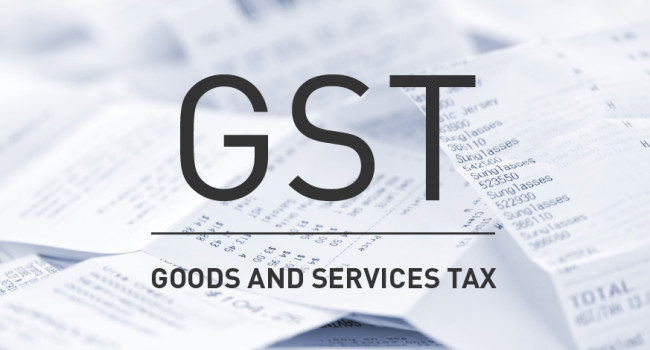Goods and service tax aims to streamline the taxation structure in the country and replace a gamut of indirect taxes with a singular GST to simplify the taxation procedure.It is one of the biggest economic and taxation reform undertaken in India.Taxes like excise duty,VAT,service tax,luxury tax will go with GST’s implementation.It avoids the cascading effect which increases the tax burden on end consumer
The old tax structure was divided into two-Direct & Indirect taxes.Direct taxes are the levies that cannot be passed on to someone else ex: Income tax.
In case of indirect tax the liability of the tax can be passed on to someone else ex: when a shopkeeper pay VAT on his sale he can pass the liability onto the customer and in effect the customer has a higher outlay when he buys an item. GST has a system of input tax credit which will allow sellers to claim the tax already paid so the final liability on the end consumer is decreased.
IN GST, there are three kind of taxes :-
- CGST - where the revenue will be collected by central government
- SGST- where the revenue will be collected by the state government of intra-state sales
- IGST- where the revenue will be collected by the central government for inter state sale.
For example:
A dealer in maharashtra sold goods to a consumer in maharashtra worth Rs 10,000. The GST rate is 18% comprising CGST rate of 9% and SGST rate of 9%.In such cases the dealer collects 1800 and 900 will go to central government and 900 to maharashtra government but if the consumer is from gujarat then in such has to pay Rs 1800 as IGST.This IGST will go to central government and there no need to pay CGST and SGST.
Say a shirt manufacturer pays Rs 100 to buy raw materials.If the rate of taxes is set at 10% then he has to pay Rs 10 as tax and the wholesaler buys it at Rs 110 and add labels to it which increases the cost by Rs 40 and the cost of shirt becomes 150 and by adding 10% tax on it he sells the shirt to retailer at the price of Rs 165.when the retailer packs the shirt he adds value if Rs 30 to it and adding 10% tax on it the total price of shirt becomes Rs 214.5 which the customer has to pay. This is known as cascading effect in which the taxes add up.
Now,with the introduction of GST when the wholesaler buys from on the manufacturer he pays 10% tax on his cost price because the liability has been passed on to him and after adding value of Rs 40 the tax he has to pay is Rs 14 but because he had already paid Rs 10 with the cost price he just has to pay Rs 3 as tax to the government and sells it to the retailer at the cost price of Rs 154 (140+14). Retailer adds value of Rs 30 to it and has to pay Rs 17 as tax but as he already paid Rs 14 he just has to pay Rs 10 to the government as tax and he sold it to the customer at the price of Rs 184 (154+30+3).
Thus the shirt for which the customer had to pay 214.5 earlier now will be available at Rs 184 making it cheaper for everyone.
- 2000- PM Vajpayee sets up committee to draft GST and set up tech & logistic for GST
- 2007-Empowered committee of state finance minister forms joint working group
- 2008- EC finalizes dual GST structure to have separate levy and legislation
- 2012- parliamentary standing committee begins discussion on GST but stalled it over clause 278B
- 2013-standing committee presents it's report on GST
- 2014- GST bill reintroduced in parliament with necessary reforms
- 2015- Passed in lok sabha. Petroleum to be excluded from GST
- 2015- GST bill does not pass in rajya sabha
- 2016- amendment model GST law passed in both houses,president gives assent
- 2017-Rajya sabha passes four supplementary GST bills.Final GST implemented from 1st july 2017.
The idea behind having one consolidated indirect tax is to subsume multiple indirect taxes is to help country's business gain a level of playing field and to put us on par with foreign nations who have more structured tax system.However, According to some economists GST will impact negatively on real estate market it would add up to 8% to the cost of new homes and reduce demand by 12%.Some experts even say that CGST,SGST are nothing but new names for VAT and excise duty and hence there is on major reduction in the number of tax layer.The aviation industry would be affected as service tax on airfares currently range from 6-8% and with GST it will surpass 15% and effectively double the rate.





This comment has been removed by a blog administrator.
ReplyDeleteThanks for one marvelous posting! I enjoyed reading it; you are a great author. I will make sure to bookmark your blog and may come back someday. I want to encourage that you continue your great posts.audit firms in abu dhabi
ReplyDeleteNice Article. Thanks for Sharing it. Its Really very Impressive
ReplyDeleteThank you. I am glad you liked it :)
DeleteThank you for sharing such useful information. I really enjoyed while reading your article and it is good to know the latest updates. Do post more.
ReplyDeleteTaxation Regulatory & Advisory Services
International Tax Consulting Firm